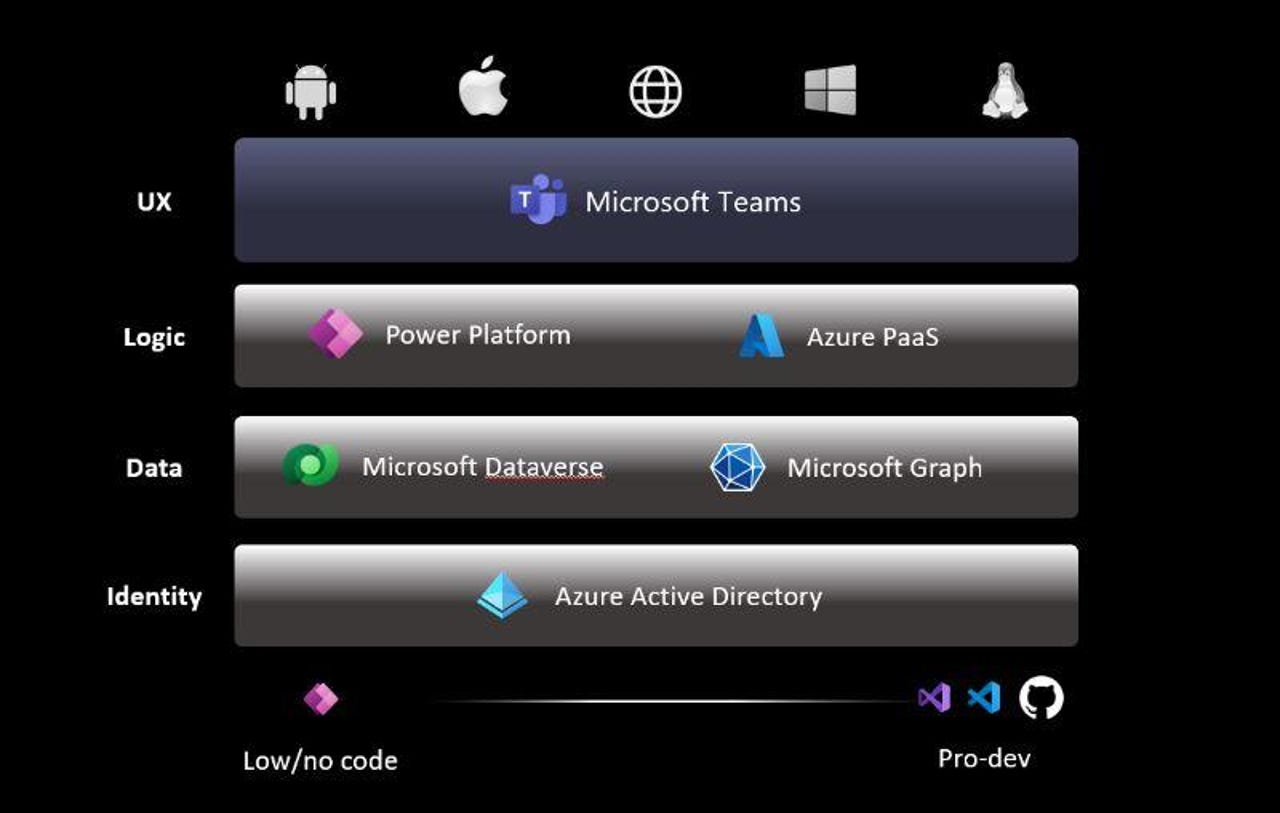Microsoft adds more developer hooks into Teams, Microsoft 365


Microsoft is opening up more programming interfaces, components, and tools to third-party developers who want to extend Teams and other Microsoft 365/Office 365 applications and services. On the opening day of its virtual Build 2021 conference on May 25, Microsoft detailed some of these new developer entry points.
Microsoft Build 2021
Microsoft is making Fluid components -- a key piece of its Fluid Framework technology for real-time co-authoring and updating -- available for Teams chat via a private preview. Fluid in Teams Chat will enable users to send messages with embedded components, like tables, lists, to-do items, etc., which can be coauthored and edited by all participants. Fluid components can be copied and pasted across chats.
Microsoft also is adding new features to its Teams apps for meetings feature which it launched last year. Teams apps for meetings let developers build apps that work across the full "lifecycle" of a meeting. New features coming to Teams apps for meetings include:
- Shared stage integration (now in preview), which gives developers new access to the main stage in a Teams meeting
- New meeting event APIs (now in preview), designed to automate meetings-related workflows through events (meeting start, meeting end, etc.)
- Together Mode extensibility (coming this summer), which will let developers create custom scenes for Teams meetings and share them with users
- Media APIs and resource-specific consent (coming soon), which will give developers real-time access to audio and video streams for transcription, translation, note-taking, and more
Microsoft also is adding some new features to the Microsoft Toolkit for Visual Studio and VS Code. Among the features now in preview are integrations with Azure, Microsoft Graph, including Azure Functions integration, SharePoint Framework integration, and more. And the developer portal for Teams -- formerly known as App Studio -- is getting new features such as access from any web browser and device; the ability to collaborate by giving others read/write access; and the ability for ISVs to link subscription offerings to their apps for in-purchase experiences inside the Teams app store and Teams Admin Center. (The in-app subscription feature is coming to preview later this summer.)
Microsoft also is looking to break down the silos between teams and email with support for message extensions in Outlook, starting with Outlook on the Web. Developers will be able to create message extensions that can work with both Teams and Outlook on the Web the same way. And they'll be able to build one Adaptive Card that can be deployed across Teams and Outlook.
At Build, Microsoft is adding a number of new connectors and features for its centralized Microsoft Graph API. Officials also announced the preview of Microsoft Graph Data Connect on Azure. Microsoft Graph Data Connect is a connector designed to copy select Microsoft 365 productivity datasets into users' Azure tenant.